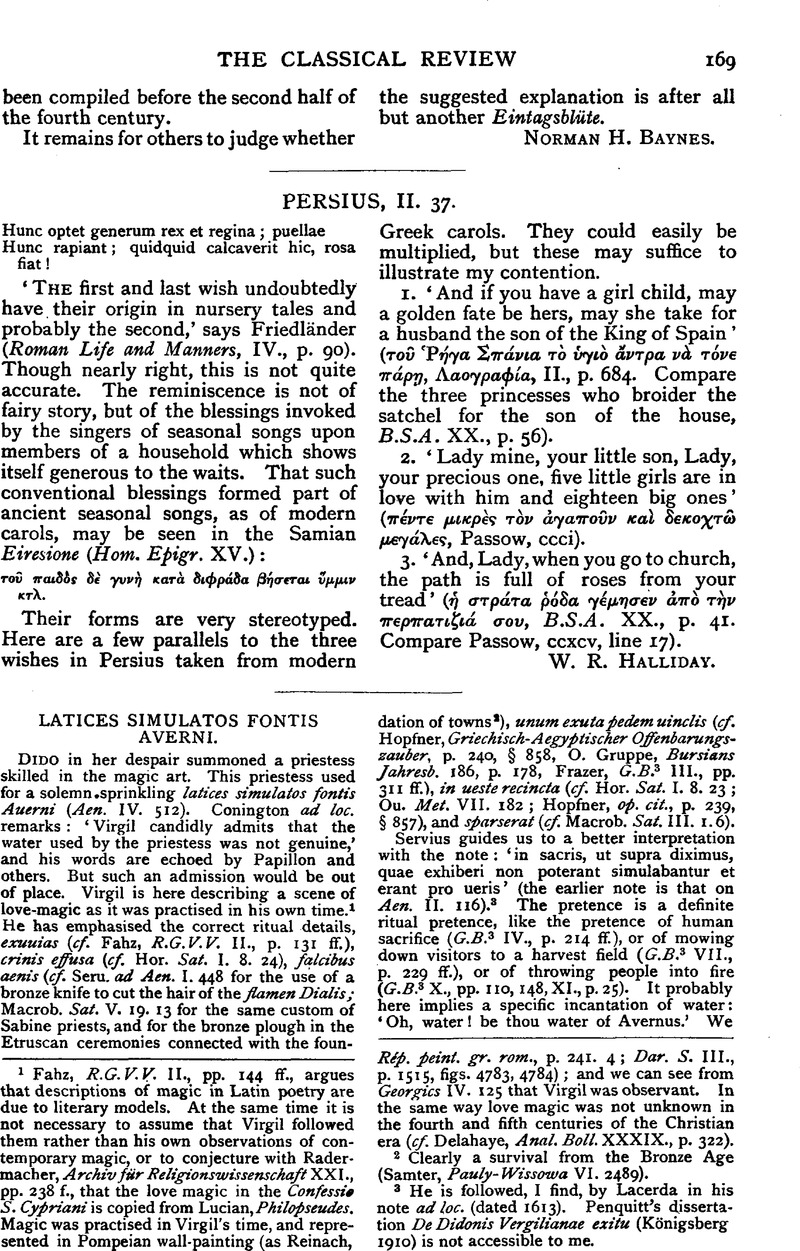Article contents
Latices Simulatos Fontis Averni
Published online by Cambridge University Press: 27 October 2009
Abstract

- Type
- Review Article
- Information
- Copyright
- Copyright © The Classical Association 1924
References
1 Fahz, , R.G.V.V. II., pp. 144 ff.Google Scholar, argues that descriptions of magic in Latin poetry are due to literary models. At the same time it is not necessary to assume that Virgil followed them rather than his own observations of contemporary magic, or to conjecture with Radermacher, , Archiv für Religionswissenschaft XXI., pp. 238 f.Google Scholar, that the love magic in the Confessio S. Cypriani is copied from Lucian, Philopseudes. Magic was practised in Virgil's time, and represented in Pompeian wall-painting (as Reinach, , Rép. peint. gr. rom., p. 241. 4Google Scholar; Dar. S. III., p. 1515, figs. 4783, 4784); and we can see from Georgics IV. 125 that Virgil was observant. In the same way love magic was not unknown in the fourth and fifth centuries of the Christian era (cf. Delahaye, , Anal. Boll. XXXIX., p. 322)Google Scholar.
2 Clearly a survival from the Bronze Age (Samter, , Pauly-Wissoiwa VI. 2489)Google Scholar.
3 He is followed, I find, by Lacerda in his note ad loc. (dated 1613). Penquitt's dissertation De Didonis Vergilianae exitu (Königsberg 1910) is not accessible to me.
- 1
- Cited by


